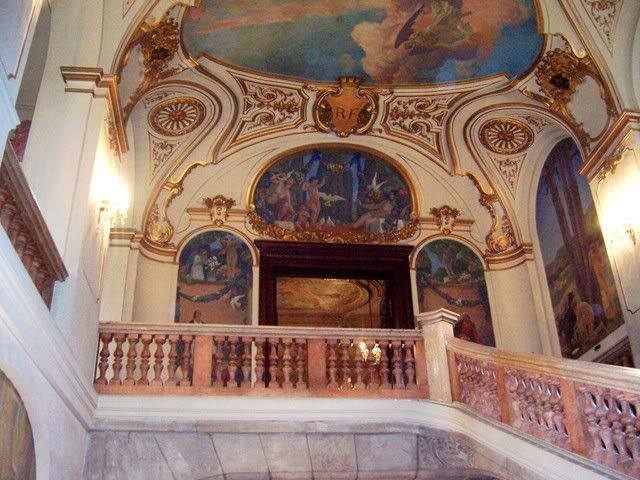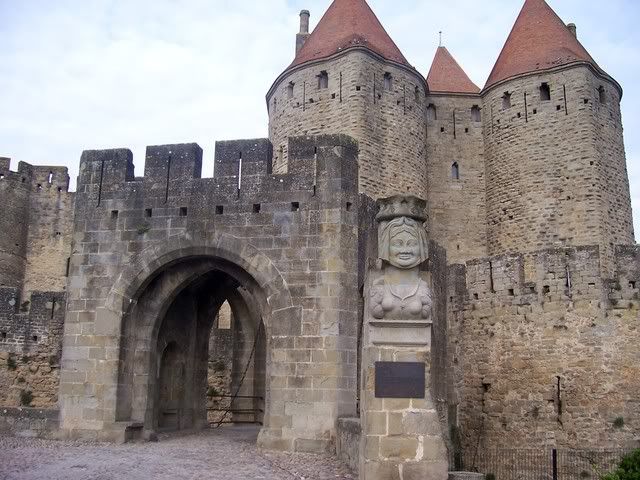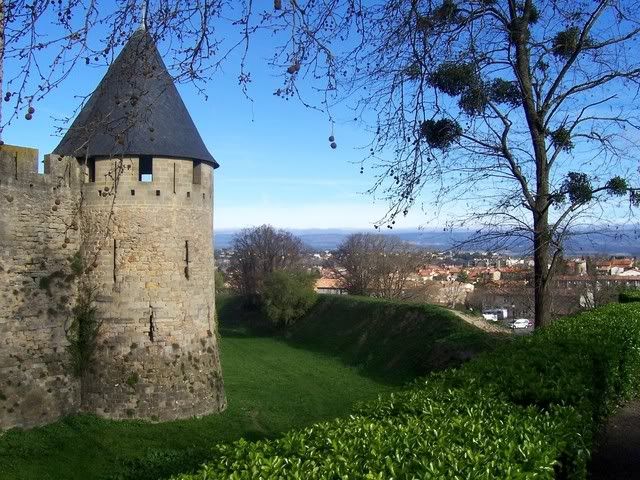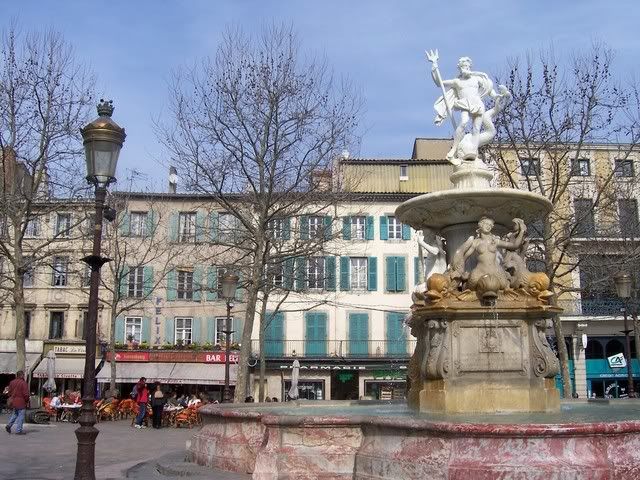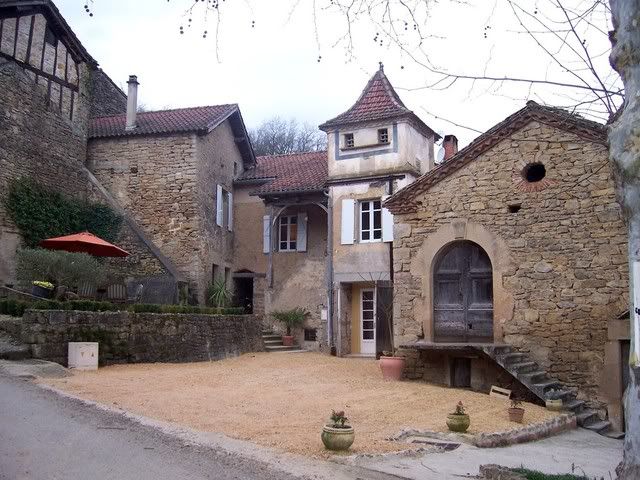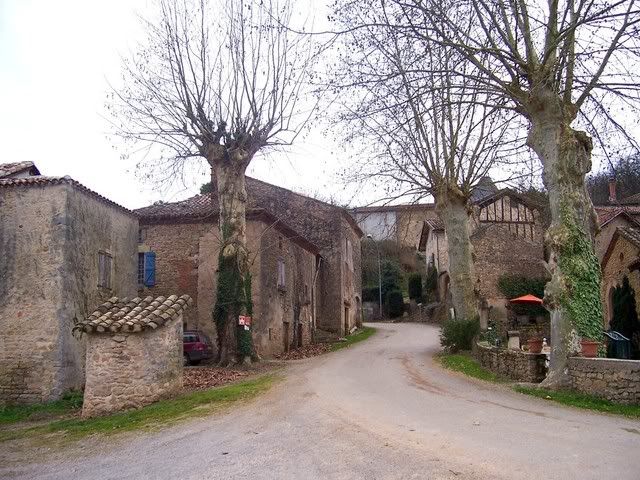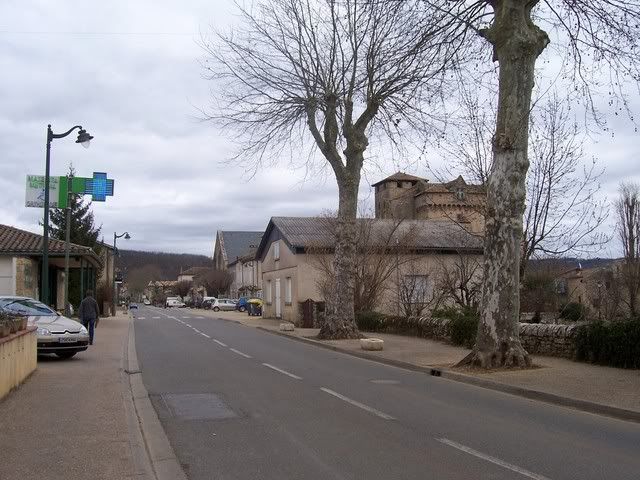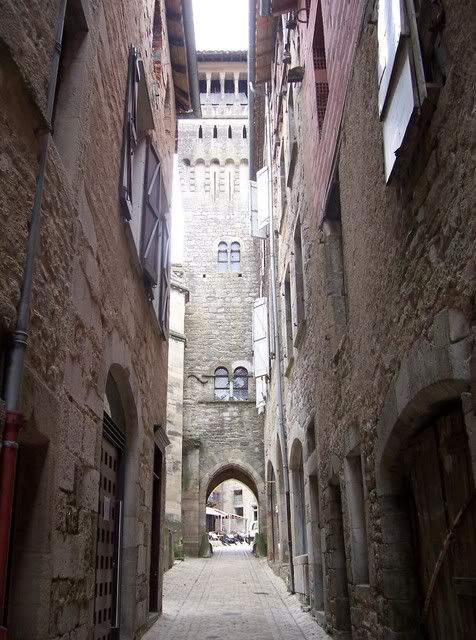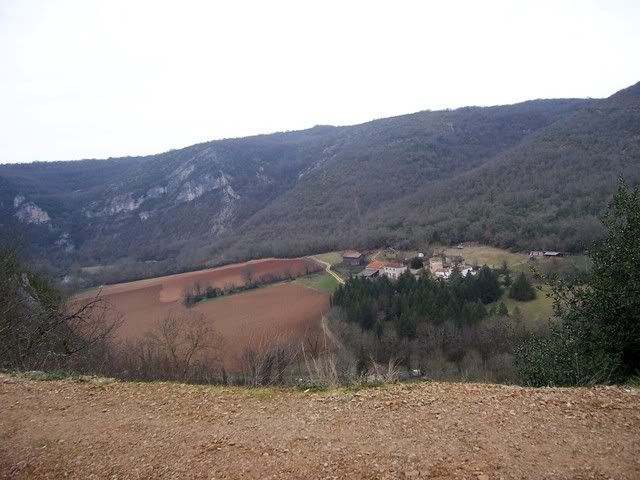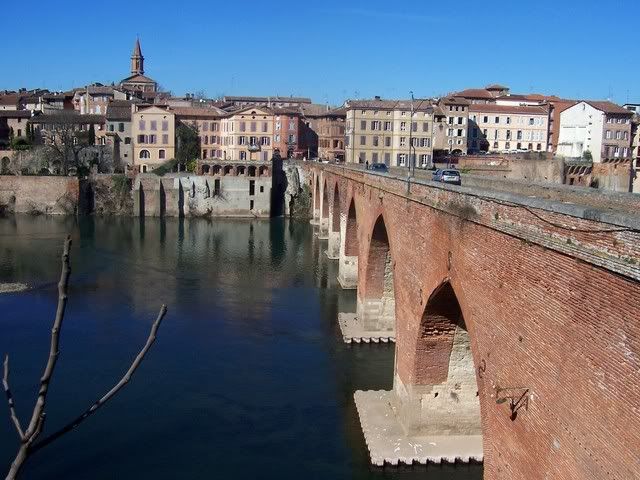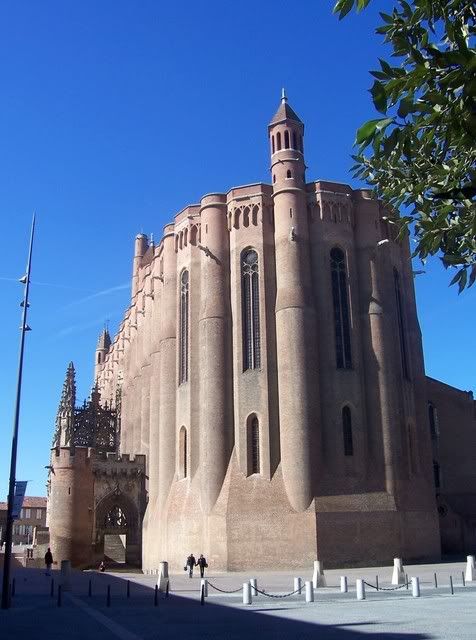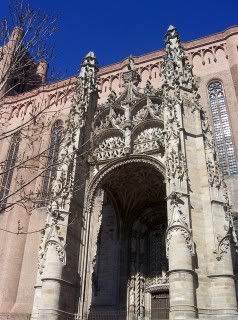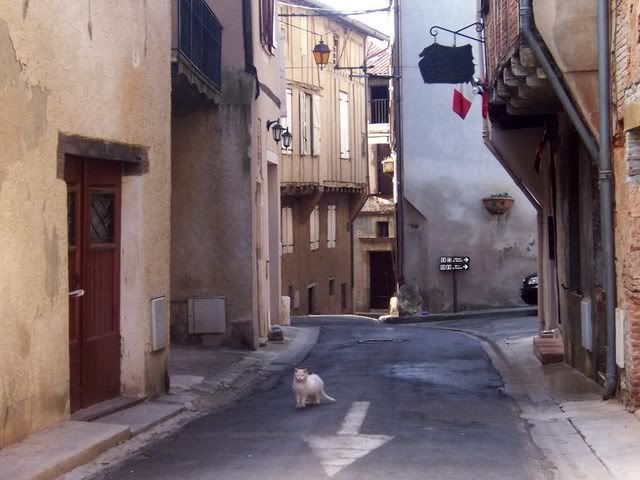Not as many sights to see in Toulouse apart from the Capitole building and an old church, but by that stage I felt more than ready to return home for a while, so there was probably much more I could have seen if I'd been in the mood for museums and galleries. For future trips to France I think I shall just go out there a week max at a time - that way I stay fresh and enthusiastic. I did enjoy looking around some of the secondhand book shops though, and some of them had a Spanish theme as Toulouse in not far from the Spanish border.
Because of the cold, I would often go into a cafe or restaurant just to warm up again, although you have to sit outside if you want to smoke. This is a photo of one of the cafes I went in.
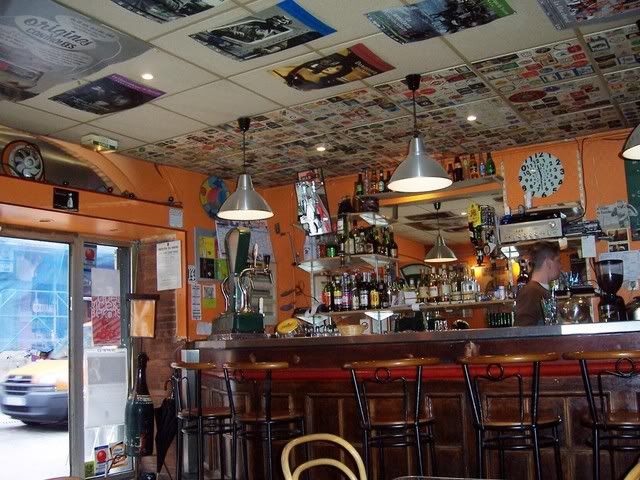
This is what Time Out says about Toulouse:
Toulouse, dubbed ‘Ville Rose’ because of its pink buildings, sits astride the Garonne river and the historic Canal du Midi, midway between the Med and the Atlantic. The heart of the town is the vast, arcaded place du Capitole, where the impressive, grandiose Capitole building forms the seat of local government. It is worth popping in, if only to see the floor-to-ceiling 19th-century paintings, including Henri Martin’s elaborate depiction of Toulousain life at the time. Inside, the Théâtre du Capitole has recently reopened following extensive refurbishment, which has brought the opulent gilt mouldings and painted cartouches back to their former glory.
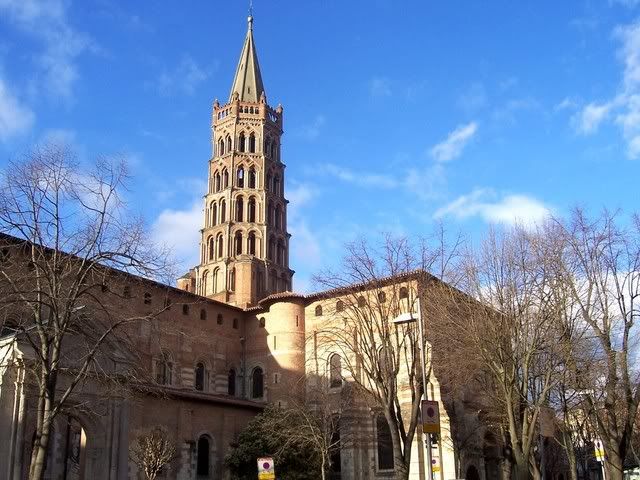 Turn up rue du Taur to see the city’s finest building, the Basilique St-Sernin, built over the course of three centuries. Romanesque, with a wedding-cake spire, it was once a stop for pilgrims and so over time it accumulated an array of holy relics, most of which are on display.
Turn up rue du Taur to see the city’s finest building, the Basilique St-Sernin, built over the course of three centuries. Romanesque, with a wedding-cake spire, it was once a stop for pilgrims and so over time it accumulated an array of holy relics, most of which are on display.
South-west of the basilica is medieval Toulouse, which is dotted with a rich assortment of historic churches, including the Gothic Les Jacobins on rue Lakanal, where the Dominican order was founded, and the Notre-Dame-de-la-Daurade, a hotchpotch of styles presided over by a black Madonna.
That last sentence surprised me - you mean I could have seen a black Madonna after all? Oh well, next time. My room-mates at the hostel in Carcassonne didn't know what I was talking about when I was referring to wanting to see a black Madonna. At first they thought I meant the Mona Lisa, and then afterwards kept thinking about the singer Madonna.
On my last day (Wed) I was pleasantly surprised to discover it was market day in the square outside the Capitole building, with stalls selling all kind of goods including books and clothes.
I like it when I find a quirky corner of town like this Grecian monument or fountain or whatever it was - it looked purely decorative - and on the opposite side a Father Christmas decoration was still hanging outside a shop in late February.
 For gift ideas, one of the products that Toulouse is famous for is violets, and there are various gift shops selling violet sweets, soaps, lotions, perfumes, candles, chocolates, teas and anything else to do with violets.
For gift ideas, one of the products that Toulouse is famous for is violets, and there are various gift shops selling violet sweets, soaps, lotions, perfumes, candles, chocolates, teas and anything else to do with violets.Crystallised violets are real violet flowers coated with sugar.
You can order violet products online directly from Toulouse in France (site is in English) at Regals.
Toulouse also holds a Festival of Violet in February, so I must have just missed it.

